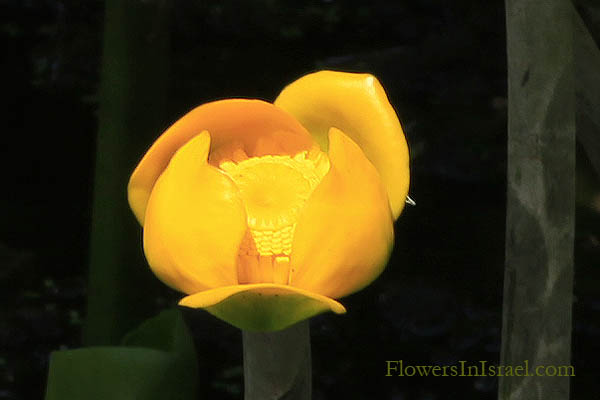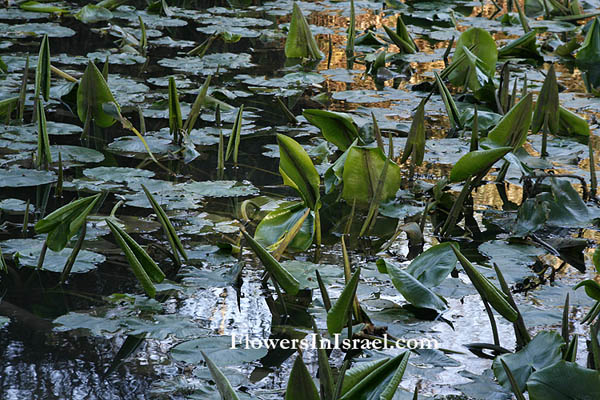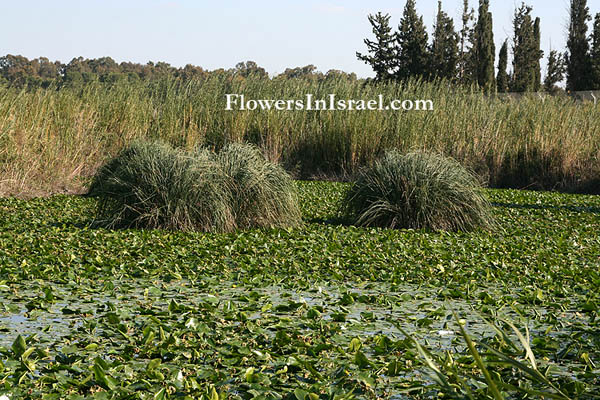Hebrew: נופר צהוב , Arabic: نينوفر أصفر
| Scientific name: | Nuphar lutea (L.) Sm. | |
| Synonym name: | Nymphaea lutea L., Nymphosanthus luteus (L.) Fernald | |
| Common name: | Yellow Pond-lily | |
| Hebrew name: | נופר צהוב | |
| Arabic name: | نينوفر أصفر , ninufar 'asfar | |
| Family: | Nymphaeaceae, נופריים |

Location: Hula Nature Reserve |
| Life form: | Geophyte | |
| Stems: | 15 to 60 cm in height and spreads 1 to 2 m on the water surface; long, stout stems | |
| Leaves: | Rosette, floating leaves 19-40x9-30cm, ovate, with a deep, acute basal sinus | |
| Inflorescence: | Flowers emerge on separate stem stalks; solitary, hermaphrodite | |
| Flowers: | Yellow flowers borne above the water; yellow sepals, yellow petals 3 times shorter than the petals; 15-20 stigma-rays; ovary superior | |
| Fruits / pods: | Dry berry; seeds 5mm | |
| Flowering Period: | May, June, July | |
| Habitat: | Humid habitats | |
| Distribution: | Mediterranean Woodlands and Shrublands | |
| Chorotype: | Euro-Siberian - Med - Irano-Turanian | |
| Summer shedding: | Perennating |

Location: Yarkon National Park, Water Lily Pool Derivation of the botanical name: Nuphar, Arabic (Persian) ninufar, pond-lily; Greek nympharion, a diminutive of nymphe; In botanical Latin, Nuphar derived from 'tό nuphar' (το νουφαρ), the Greek neuter noun for pond-lily, a plant used in medicine and known under that name to Aristotle and Dioscorides. When James Edward Smith validated the name Nuphar for a segregate from Nymphaea, he neglegted shifting the epiphet of feminine Nymphaea lutea to neuter Nuphar luteum, and wrote Nuphar lutea. lutea, golden, saffron, orange-yellow. Nymphaea, from the Greek term "Νυμφαία", possibly related to "Νύμφη" meaning "nymph". The nymphs in Greek and Roman mythology were supernatural feminine, attractive and playful water nymphs of the same habitat. The Hebrew name: נופר, Nuphar, transliteration from the scientific name.

Location: Yarkon National Park, Water Lily Pool |